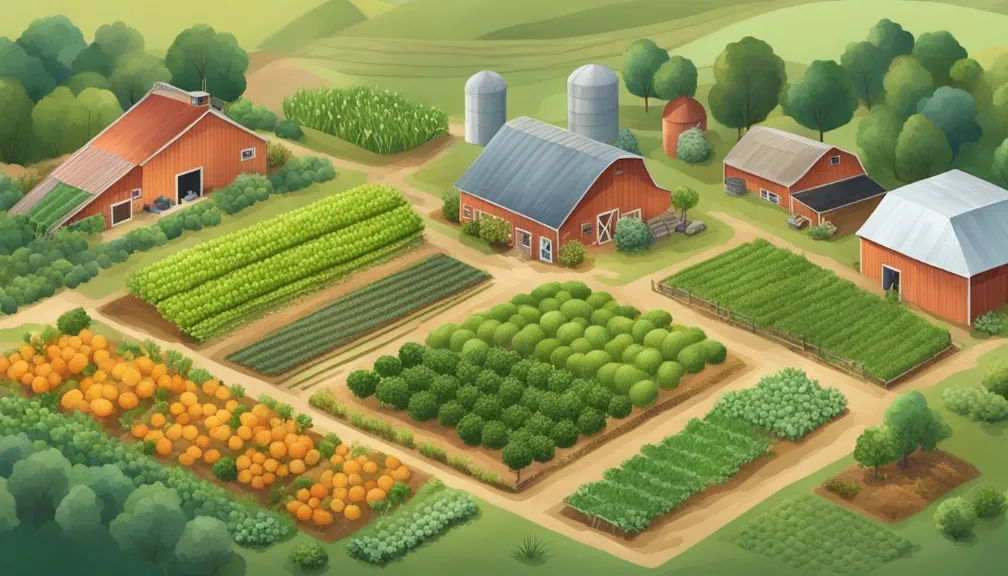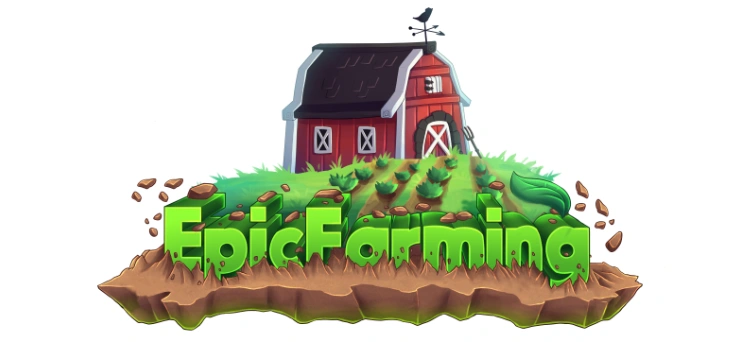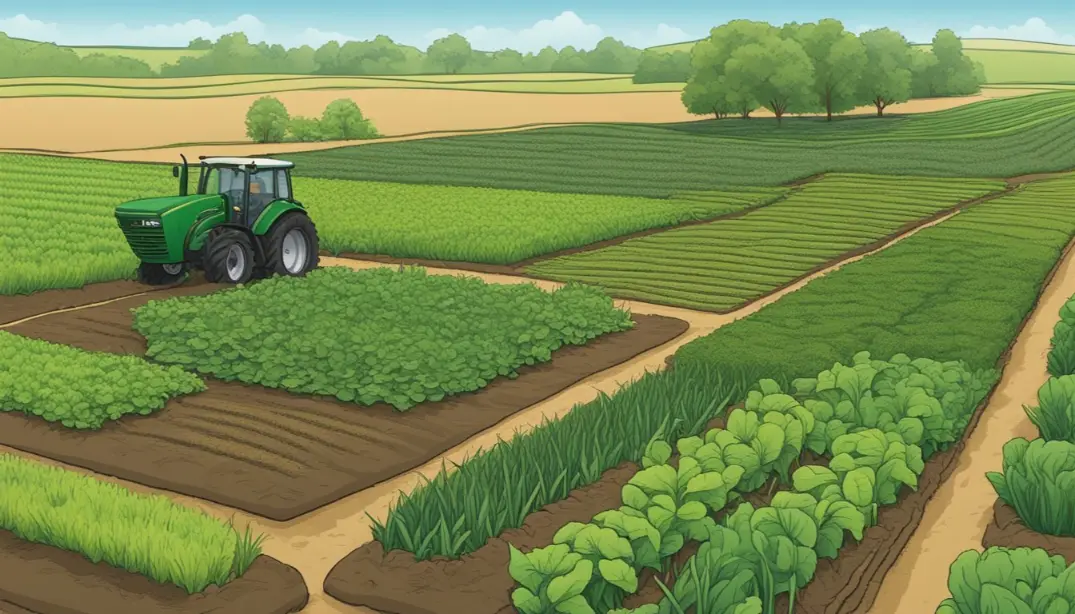Commercial Farming is a type of farming that involves growing crops or raising animals with the intention to sell them in the market and make a profit.
It is a capital-intensive technique that requires large-scale production and high-demand crops. It may also provide raw materials for food industries or export to other countries.
In this blog post, we will explore the aspects, Different types and their characteristics, advantages & disadvantages and the challenges and opportunities.
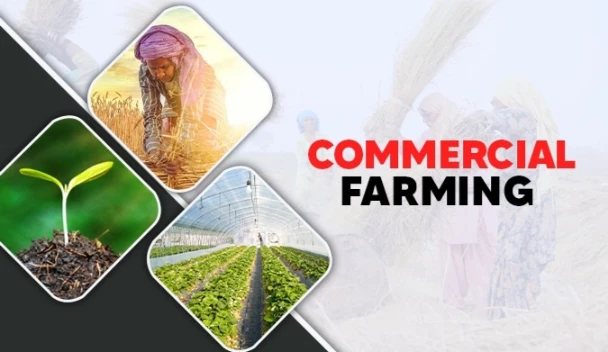
Types Of Commercial Farming
There are many types of commercial farming, depending on the products, methods, and markets involved. Some of the common types are:
Dairy Farming
This involves raising animals such as cows, buffaloes, goats, and sheep for their milk and dairy products. Dairy farming is one of the most important sources of income and nutrition for many rural communities around the world.
Major dairy farming countries are the United States, China, India, and New Zealand.
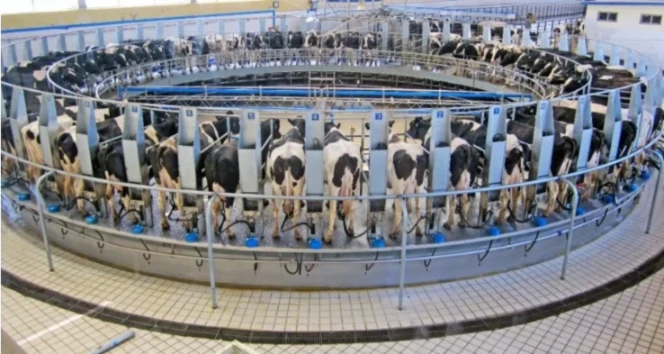
Livestock Ranching
This involves raising animals such as cattle, sheep, pigs, and poultry for their meat, eggs, and leather. Livestock ranching is one of the most widespread and profitable type, especially in regions with large areas of grassland and low population density.
Biggest livestock ranching countries are Brazil, Australia, Argentina, and the United States.
Grain Farming
This involves growing crops such as wheat, rice, corn, and barley for human consumption or animal feed. Grain farming is one of the most intensive and mechanized type, requiring large amounts of land, water, fertilizer, and pesticides.
Best grain farming countries are China, India, the United States, and Russia.
Mediterranean Agriculture
This involves growing crops such as olives, grapes, citrus fruits, and nuts in regions with a mild and dry climate. Mediterranean agriculture is one of the most diverse and specialized type, producing high-quality and high-value products such as wine, olive oil, cheese, and dried fruits.
Some of the major Mediterranean agriculture countries are Italy, Spain, France, and Greece.
Plantation Farming
This involves growing crops such as coffee, tea, cocoa, rubber, and tobacco in tropical and subtropical regions. Plantation farming is one of the most labor-intensive and exploitative type, often relying on cheap and unskilled workers and causing environmental and social problems.
Specialist in plantation farming countries are Brazil, Indonesia, Colombia, and Sri Lanka.
Mixed Crop And Livestock Farming
This involves growing crops and raising animals on the same land, using the crops as feed for the animals and the animal manure as fertilizer for the crops.
Mixed crop and livestock farming is one of the most sustainable and efficient type, reducing the need for external inputs and increasing the productivity and diversity of the farm.
At large scale, mixed crop and livestock farming countries are Germany, France, China, and India.
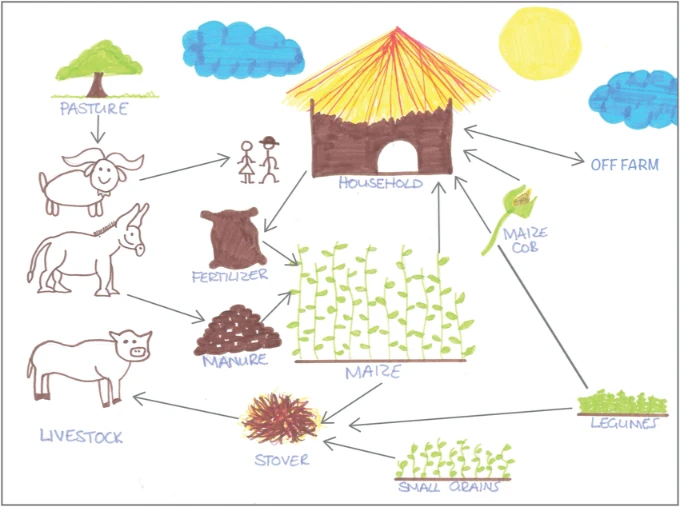
Advantages And Disadvantages Of Commercial Farming
| Sr No. | Advantages | Disadvantages |
|---|---|---|
| 1- | It increases the food supply and reduces hunger and malnutrition in the world. | It depletes the natural resources and causes environmental degradation and pollution. |
| 2- | It generates income and employment for the farmers and the related industries. | It reduces the biodiversity and genetic diversity of the crops and animals. |
| 3- | It contributes to the economic growth and development of the countries and regions involved. | It increases the vulnerability and dependency of the farmers on the market fluctuations and external factors. |
| 4- | It stimulates innovation and technology in the agricultural sector. | It creates social and economic inequalities and conflicts among the farmers and the consumers. |
| 5- | It creates a variety of products and choices for the consumers. | It affects the health and safety of the consumers due to the use of chemicals and additives in the products. |
Challenges And Opportunities Of Commercial Farming In The 21st Century
Commercial farming faces many challenges and opportunities in the 21st century, as the world population, demand, and competition increase.
Some Of The Challenges Are:
- Climate change and its impacts on the weather patterns, water availability, and crop yields.
- Land degradation and soil erosion due to overuse and misuse of the land resources.
- Pest and disease outbreaks due to the monoculture and lack of resistance of the crops and animals.
- Food waste and loss due to poor storage, transportation, and distribution systems.
- Food security and sovereignty issues due to the dependence on imports and exports of food products.
Some Of The Opportunities Are:
- Organic and sustainable farming practices that conserve and enhance the natural resources and the environment.
- Agroforestry and agroecology systems that integrate trees and crops and create synergies and benefits for the farmers and the ecosystem.
- Urban and vertical farming methods that utilize the urban spaces and buildings and reduce the distance and cost of food production and consumption.
- Biotechnology and genetic engineering techniques that improve the quality and quantity of the crops and animals and create new and novel products.
- Digital and smart farming technologies that optimize the use of inputs and outputs and increase the efficiency and profitability of the farms.
Conclusion
Commercial farming is a type of farming that aims to produce and sell agricultural products for profit. It involves various types of products, methods, and markets, depending on the needs and preferences of the farmers and the consumers.
It is a dynamic and complex phenomenon that requires constant adaptation and innovation to meet the changing demands and expectations of the world.
Related Posts:
How To Grow Pistachio From Seed: Important Steps, Tips & Tricks
What Is Sustainable Agriculture: Elements, Benefits & Challenges
Contour Plowing: How Does Work, Implements And Benefits
Agricultural Revolution: Key Causes, Effects & Shape The Modern World

Meet Our Expert Agricultural Administrator
Welcome to agrigreenhands.com, your dedicated hub for all things related to agricultural farming. Leading the way in our commitment to sustainable and innovative practices is Jawad Hussain, our esteemed administrator with a profound background in agriculture….
